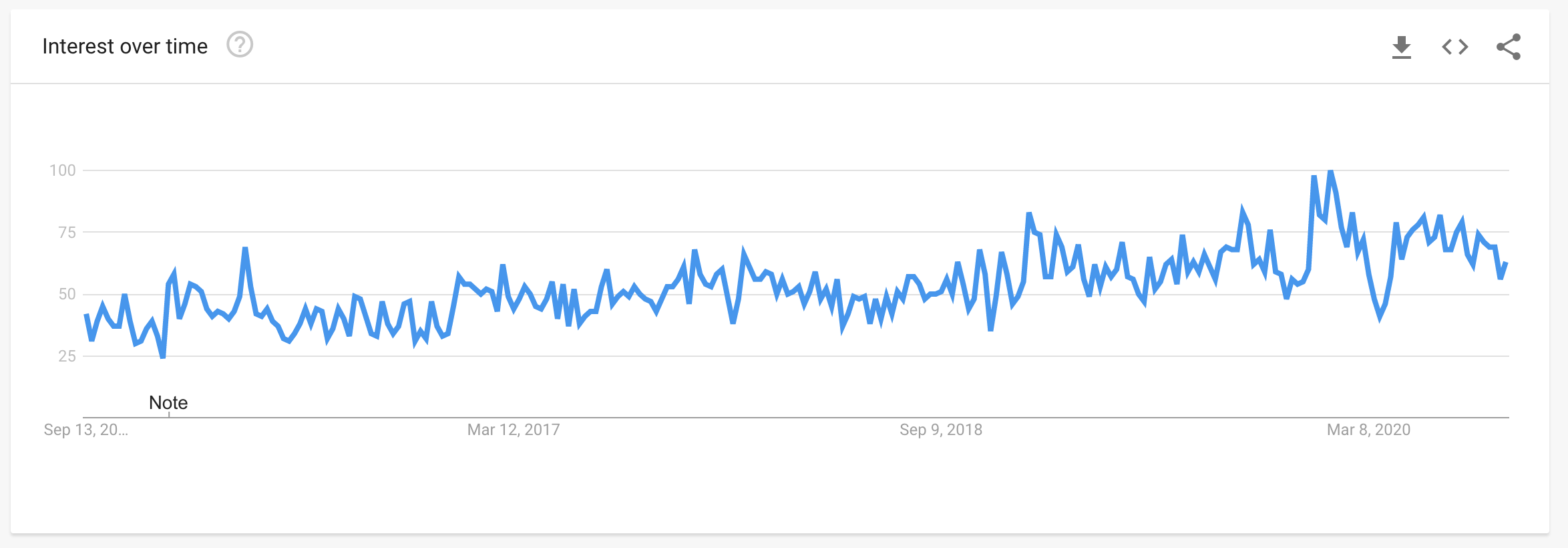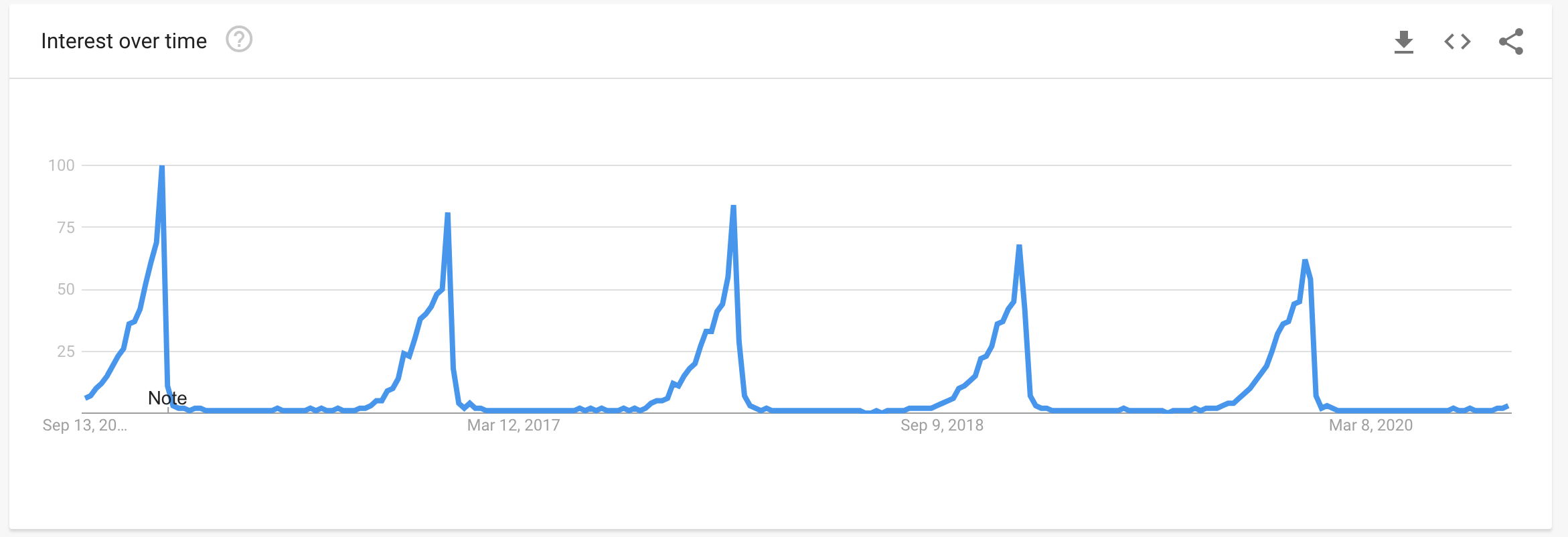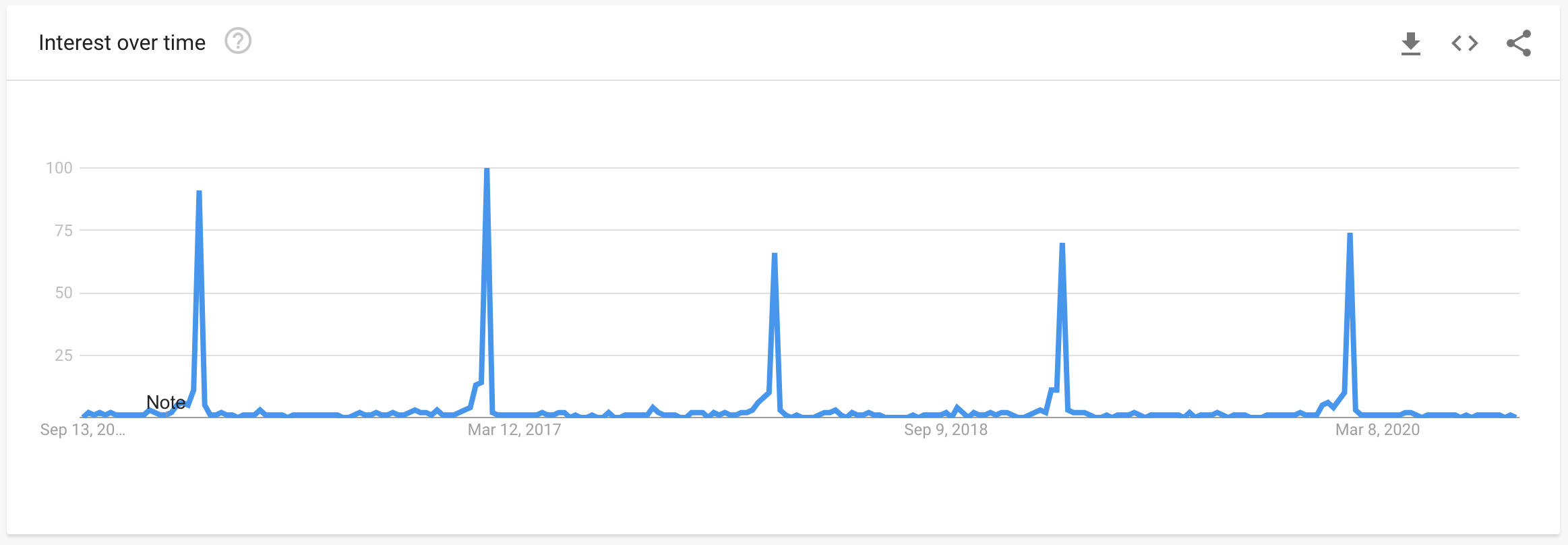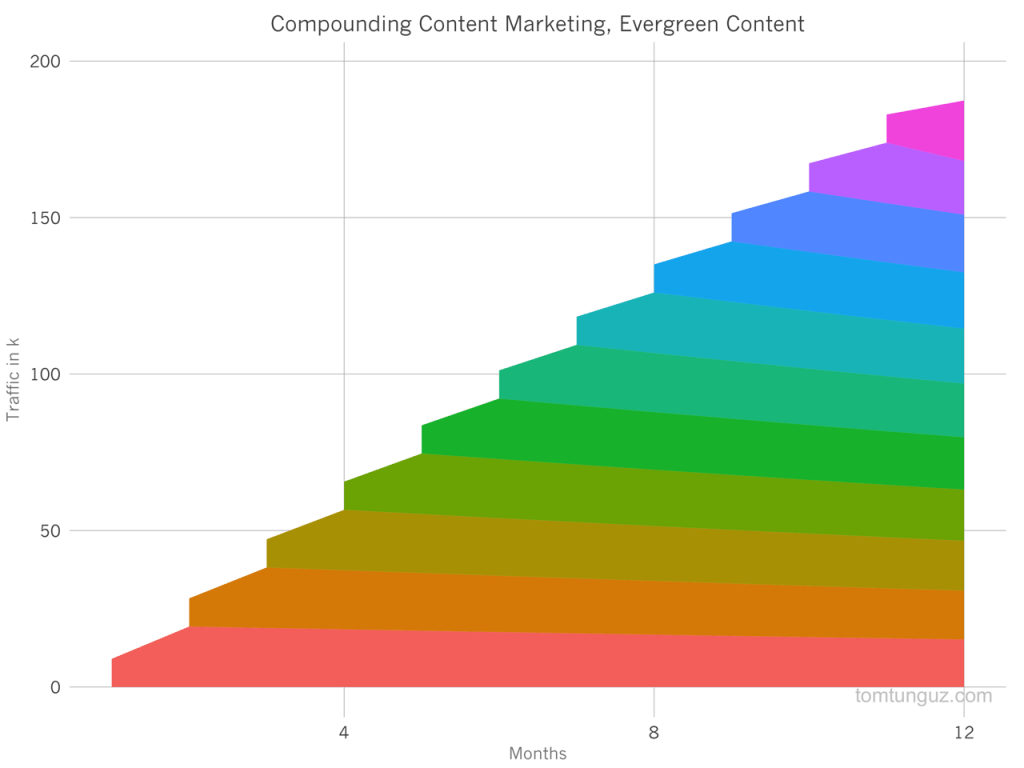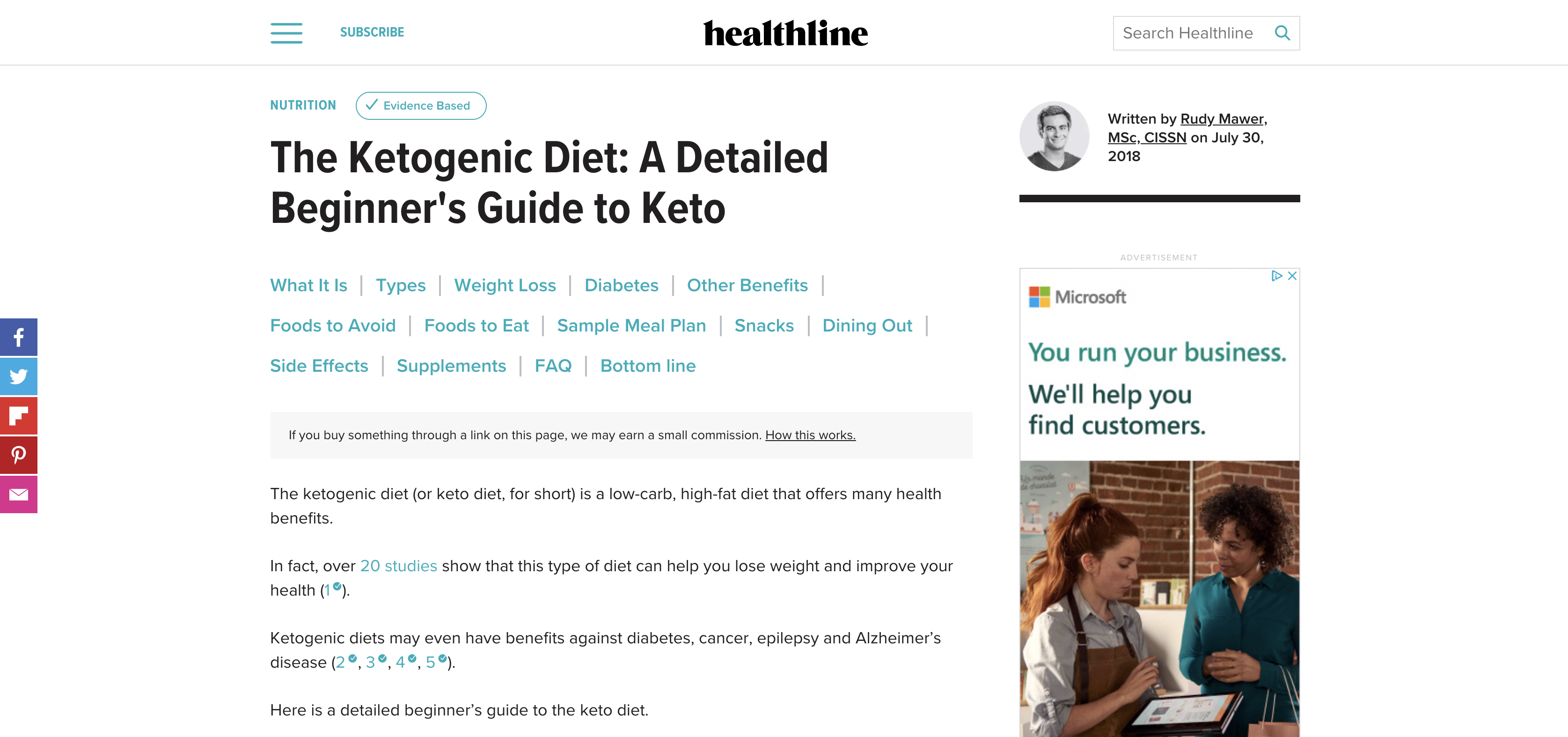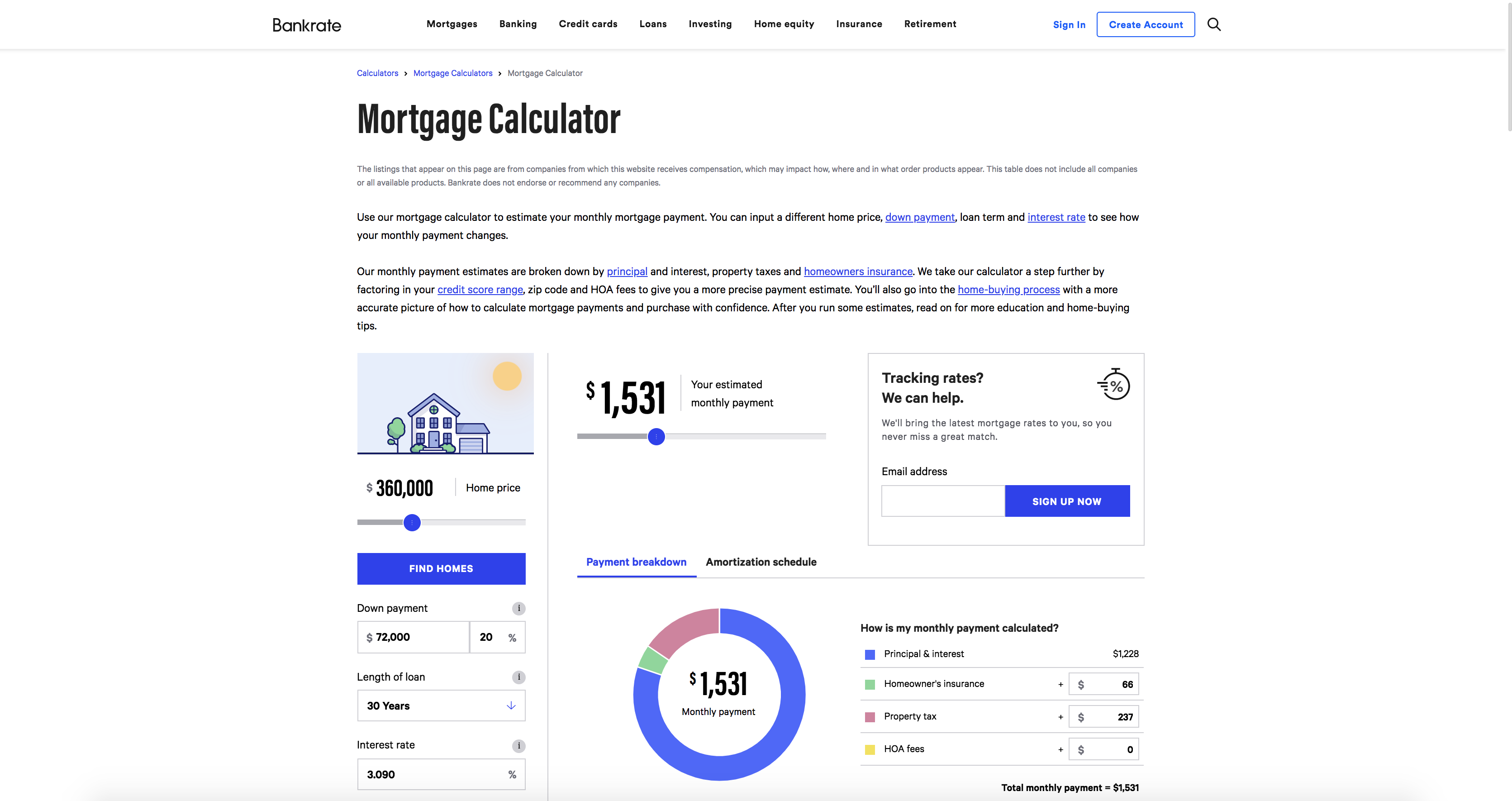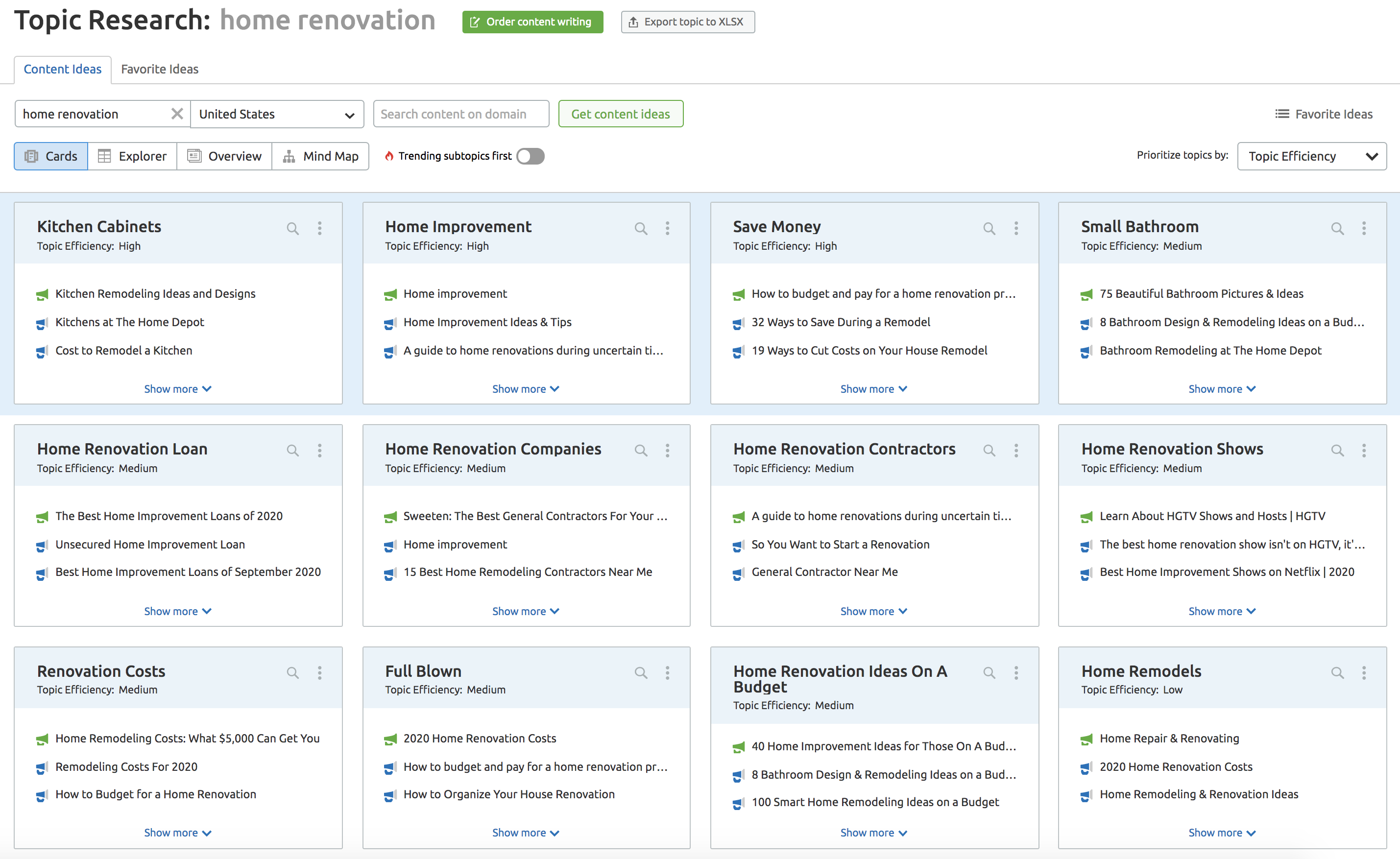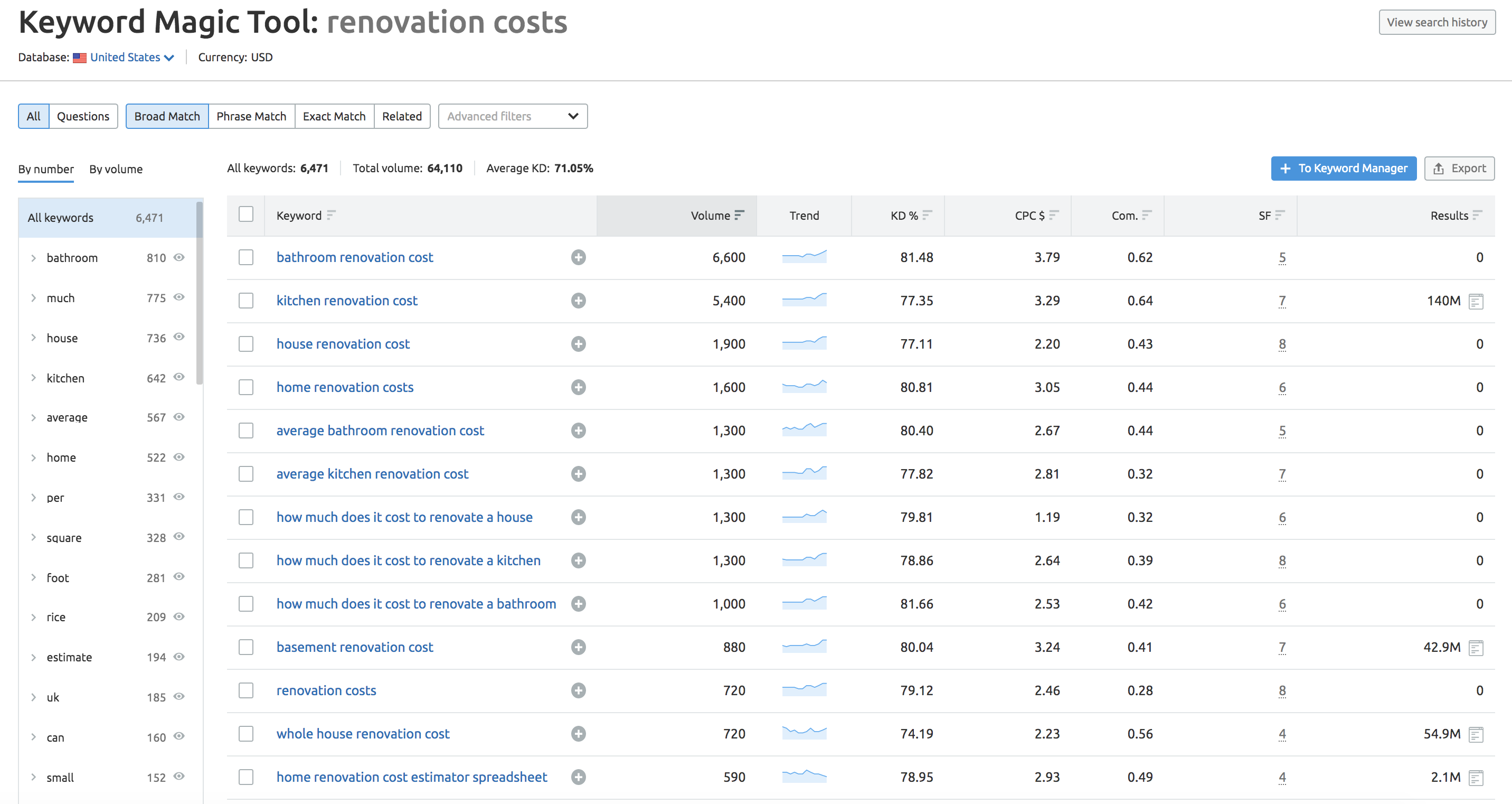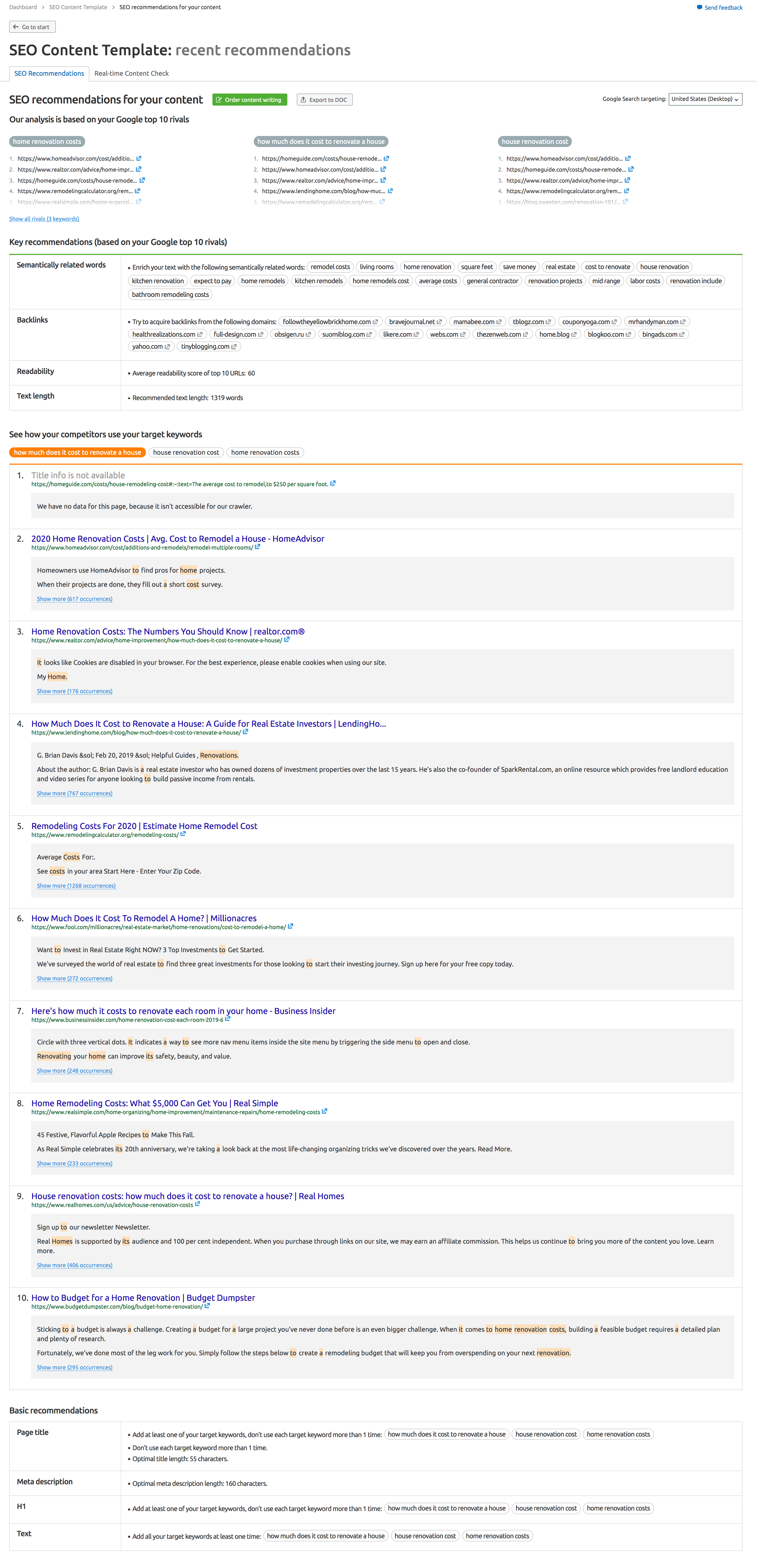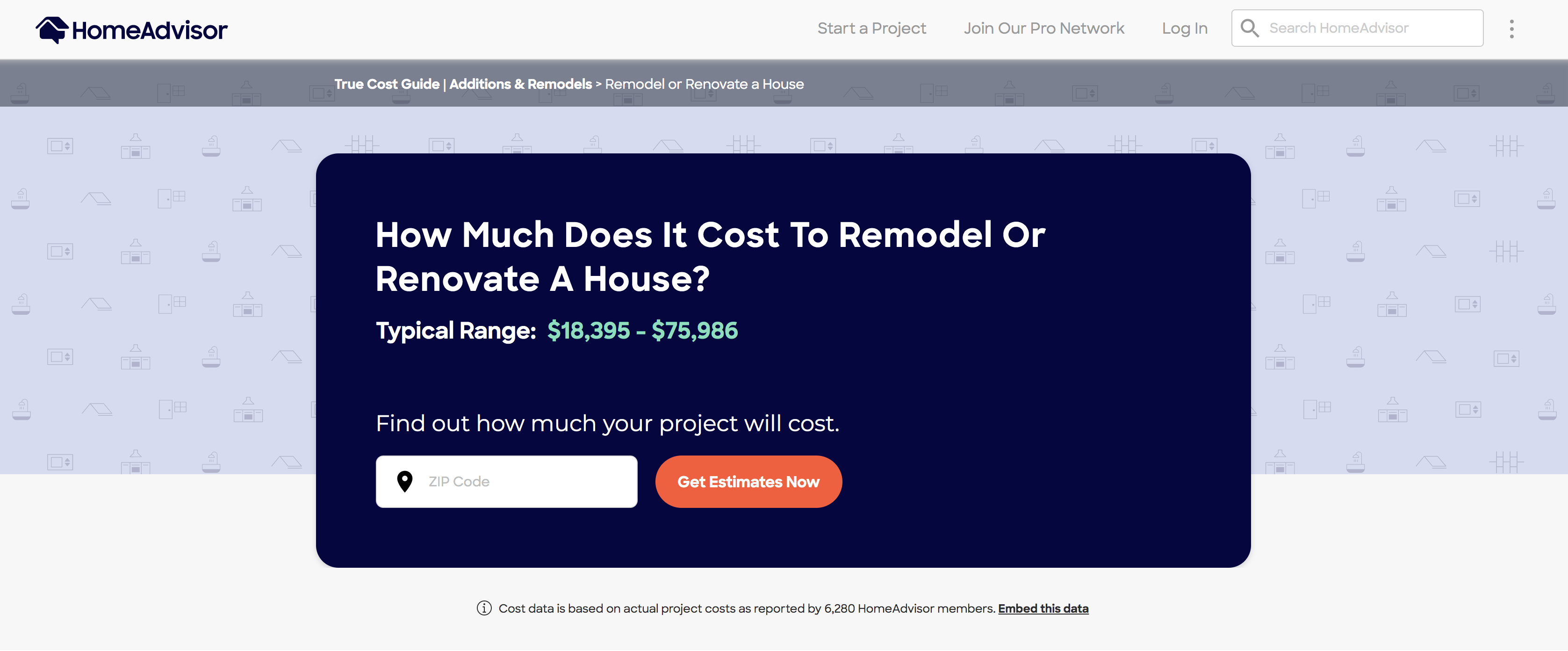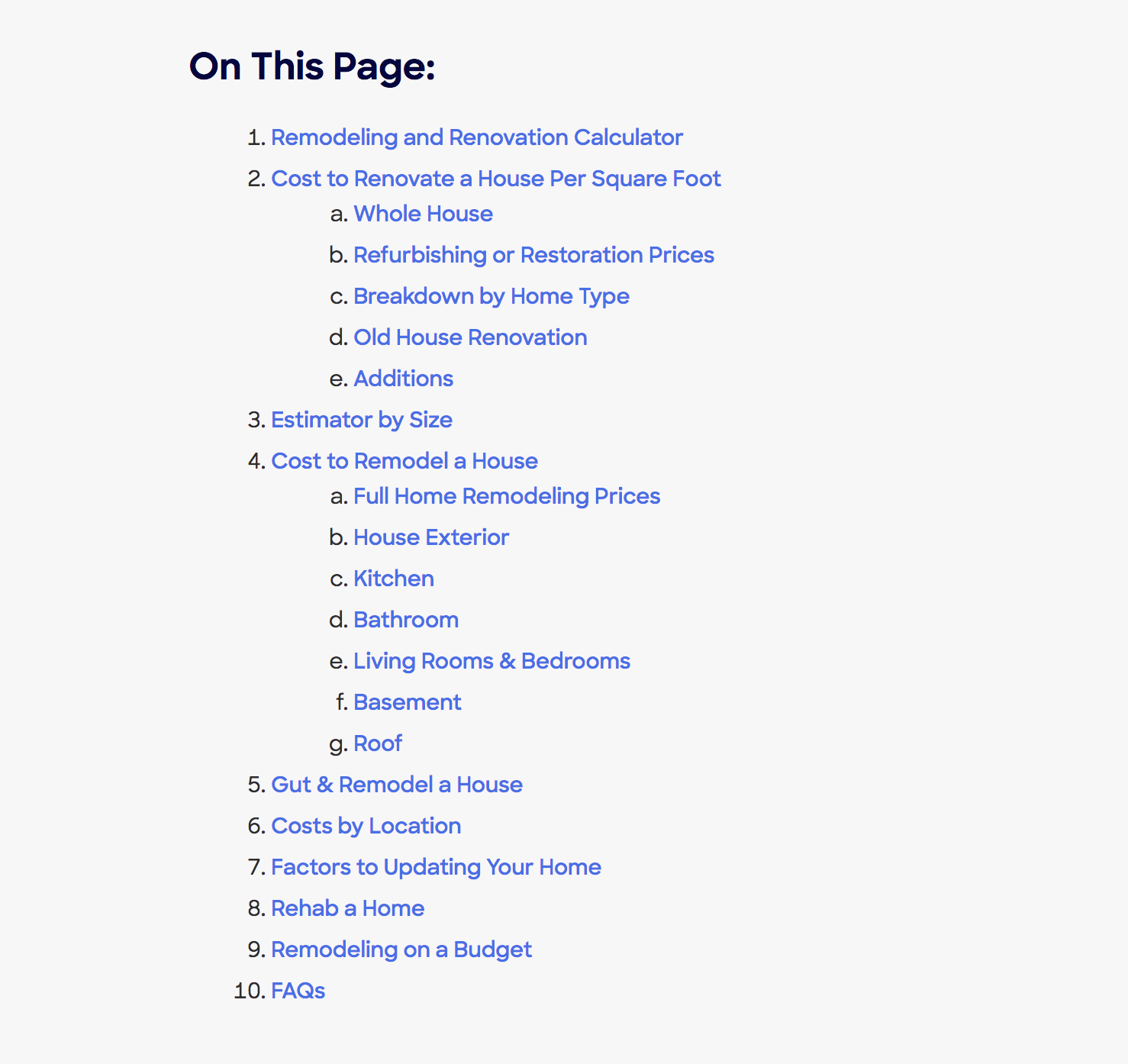If you are not using evergreen content to deliver ongoing growth, there is a good chance that you are missing out on valuable search traffic.
There is no denying the importance of content as part of your SEO strategy, and it has previously been confirmed as one of Google’s top three ranking factors alongside backlinks and RankBrain.
But, at least when it comes to powering organic search growth, not all types of content can contribute to success in the same way.
However, evergreen content is what usually forms the backbone of a successful strategy. In this guide, we will take a deep dive into this all-important type of content, specifically looking at:
You will learn what it is and why creating evergreen content is essential, as well as a scalable process that you can use to deliver compounded growth in organic search traffic.
What is Evergreen Content?
The topics that evergreen content covers have a constant level of sustained interest, and they do not experience significant seasonable peaks and troughs in demand.
Whatever the news, whatever the time of year, there are always people wanting to consume content around these topics. The information contained in evergreen content pieces is always fresh for readers who are looking to answer a question or learn more.
Think topics such as:
How to Start a Blog
Best Savings Accounts
While there might be a gradual increase or decrease in interest over time in the long-term, this is not impacted by seasonality.
On the other hand, this contrasts with seasonal content, topics such as:
Christmas Cake Recipe
Super Bowl Results
When a topic has an always-on level of interest, it is evergreen.
By effectively utilizing evergreen content as part of your SEO strategy, it can become a powerhouse that drives ongoing growth with every piece that you publish.
What Type of Content is Not Evergreen?
There is often confusion surrounding what classes as evergreen content and what does not fall into this category, and when planning a content strategy, it is vital to effectively determine the type of content that you need to be producing to drive success.
So to set the record straight, evergreen content is not:
- News posts and articles
- Product announcements
- Statistics and trends that go out of date
- Seasonal content (relating to Christmas, Easter, specific events, etc.)
- Content about current trends
If a piece of content is expected to see a decline in interest and relevance after a set timeframe (let’s say after an event has finished or a holiday season has ended), then it is not evergreen.
We can think of evergreen content as covering topics that do not have an expiration date, where the interest is not expected to drop off any time soon.
Of course, this does not mean that seasonal content does not have a place in your strategy because it does. It just serves a different purpose and has other amplification tactics put behind it than an evergreen piece.
Popular Evergreen Content Formats
We have looked at what isn’t evergreen content.
So then, what is?
The most popular content formats that fall into this category include:
- How-To Guides
- Listicles
- Top Tips
- Product Reviews
- Informational Long-Form Guides
- Pillar Pages
- Video
- Interviews
- Buying Guides
- Glossaries
- FAQs
- Case Studies
- Research Studies
- Checklists
- Testimonials
- Tools and Calculators
It is important to remember that evergreen content can cover many different formats, each of which can serve a specific purpose as part of your more comprehensive strategy.
Remember, though, that these are simply formats. You then need to identify relevant evergreen topics in your industry and determine the most effective format to use. Ask yourself the question, “do we expect the interest in this topic to drop off anytime soon?”
If the answer is no, there is an excellent chance it is an evergreen topic that can drive sustained results over time.
The Importance of Evergreen Content for SEO
Evergreen content can help you to implement a strategy that ranks for competitive keywords on the SERPs and earns sustained traffic.
It takes time to rank a piece of content on the SERPs. Great content on its own is rarely enough to hit top rankings (unless we are talking long-tail topics or a very authoritative brand who is publishing the content).
For most businesses they also need to actively build backlinks to their content and promote it to their audience. This means that it is common for it to take time to see a piece of content increase in visibility and reach its top performance. Plus, evergreen content typically earns more links due to the fact you can continue to promote these pieces over the long-term. Get your content ranking in the top spots, and you will benefit from it long-term.
And Marketing Insider Group sums this up perfectly, by providing data on the compounding effects of evergreen content and stating that “useful, valuable content will stay relevant over time, and will continue to generate traffic and leads past their publication date”:
In an ideal world, this is how the growth that evergreen content delivers should look. While different pieces will always yield different results, this should be what you are ultimately working towards… the point where every article you publish drives traffic and leads.
3 Examples of Awesome Evergreen Content
We could easily share hundreds of examples of excellent evergreen content that performs well. But we will show you a few examples, and then you can hunt down top pieces of evergreen content in your sector to build into your content marketing strategy.
Have questions about creating evergreen content? We will teach you a scalable process for developing it, but here are three examples that we love and think will help you to understand what is possible when you can produce content that delivers the results around an always-in-demand topic:
1. Amerisleep: Reset Your Broken Internal Sleep Clock and Fix Sleep Schedule
Worldwide, many people struggle to sleep. That is why Amerisleep created a great guide that gives those who suffer from the problem of a broken sleep schedule a solution.
We can see that over 14,000 people search for just three variations of the primary search term here every month. By creating content about improving sleep habits and answering questions about adjusting or fixing sleeping schedules, Amerisleep has built out a solid piece of evergreen content that answers a big question posed by consumers. This piece of content will always be relevant, helping build their reputation and assisting with their organic growth.
2. Healthline: The Ketogenic Diet: A Detailed Beginner’s Guide to Keto
We have already outlined the fact that in-depth informational guides make the perfect format for evergreen content, and this piece from Healthline is the perfect example.
This 2,500+ word guide does give a detailed beginner’s introduction to the Keto diet. If we look at how it performs, we can see that this single piece of content drives over 800,000 hits from organic search every month, as well as having earned 13.5k backlinks.
3. Bankrate: Mortgage Calculator
Tools and calculators make great pieces of evergreen content. The demand for these tools are not going away, and Bankrate’s mortgage calculator is an excellent example of a resource that users want and use frequently. It identifies a need and opportunity as there are thousands of searches every month for ‘mortgage calculator.’ Plus, it serves an actual purpose to the audience by delivering a solution.
And the result of this is a staggering 2.4 million organic hits every single month:
A Scalable Process for Creating Evergreen Content
Now that we have looked at what evergreen content is (and what it is not) and have shown you some of the different formats that work well to create content around long-lasting topics let us take a look at a scalable process that you can use to drive growth.
From finding topics and content ideas through to promoting your evergreen assets, you can use this framework to stack one successful piece on top of another to compound your site’s organic growth.
Coming Up With Content Ideas
Every successful piece of content, evergreen or not, starts with a great idea. To launch a solid strategy that compounds growth, you need to be able to come up with idea after idea.
So, where do you start?
Topic Research
Using the SEMrush Topic Research tool, you can identify topics around your core product or service offerings in minutes, giving you full insight into the content your audience is looking for.
Enter a keyword and hit ‘get ideas,’ and you’ll see a series of topic suggestions that you can prioritize by volume, difficulty, or efficiency.
This should set you up with a whole host of ideas. However, most effective evergreen content goes one step further to understand both the primary and secondary keywords that are being targeted and how the pieces stack and align with your broader SEO strategy.
Keyword Research
Keyword research allows you to understand the size of the opportunity from your piece of content. The Keyword Magic tool is perfect for this.
Let us assume you have identified ‘renovation costs’ as a great topic from the research you conducted above. Go ahead and run this through the Keyword Magic tool to get a wide array of keyword ideas, from long-tail keywords to questions, related suggestions, and more.
Without this step, it would have been easy to push ahead and create content that targeted the top-level term of ‘renovation costs.’ But when we dig deeper, we can see that volume exists to target specific keywords within this content. Another alternative is to use the Keyword Gap tool to uncover keywords that your competitors rank for but that you do not.
Keyword research helps to shape the scope of a piece of content, and we can already see from this research that we would need to ensure that we work into our strategy key content around the costs associated with kitchen and bathroom renovations.
Realistically, these could end up being their own evergreen pieces. If you miss out on this step, you could be missing out on tremendous opportunities to pick up traffic from your content; it would be like working blindfolded.
Use Topic Research to identify the broader topics, and dig deeper into these with keywords so you can find a title for your content and how to structure it.
Planning Evergreen Content
Once you have identified the topic and title of your piece of content, you need to get to work planning the content’s structure.
Think of this as creating a blueprint. When it comes to creating content, you need to focus on creating the best piece out there on the topic that meets the searcher’s intent.
It would be best if you analyzed the top-ranked web pages for the main primary keywords being targeted by your piece of content to understand precisely how the piece should be structured. And you can use the SEO Content Template tool to help you to plan your content.
For example, let us assume that we are going to push ahead with creating an evergreen piece around the topic of ‘how much does it cost to renovate a house?’
Add in your target keywords and hit ‘create SEO template.’
The tool will then analyze the top 10 ranked web pages for these keywords and build out a template that you can use.
This should help you to create a solid brief for your content writing team, ensuring that you have set expectations around:
- Word count
- Semantically related keywords
- Terms to include in the page title, H1, and within the content
And you can go ahead and export this to a doc to share with whoever needs to have sight of the plan.
Top Tips for Producing Evergreen Content
When it comes to content writing and producing your piece, you need to understand, primarily, what a user is expecting to gain from your piece.
And you will notice that the SEO content plan includes a list of the top 10 ranking web pages for your target keywords.
Go ahead and check these out, especially the ones that rank in the top 3.
If we look at the examples from our template above, we see that this page from Home Advisor ranks no.1 for ”how much does it cost to renovate a house?’
Digging deeper into this page, we want to particularly pay attention to the table of contents at the top:
This helps to understand the benchmark of what you are competing against.
Your content needs to be as least as good as what already ranks in the no.1 position; otherwise, you will struggle to gain traction.
But do not just look at a single page in isolation.
If we head to the page that ranks in no.2 position, we see a much shorter article—just 729 words in standard article format.
There is a clear difference in the depth of the topic between the no.1 and no.2 rankings, but you need to know what you are competing against.
You can then go ahead and create something that is equally as excellent, if not more so, than your competitor’s content.
But when it comes to producing evergreen content, you also need to make sure you are paying attention to and considering:
Do not overlook the basics of content creation and on-page optimization (you can use our On-Page SEO checker to help with this), and follow these practices with evergreen content just as you would any other piece.
Promoting Your Content
As we have already mentioned, once you publish a piece of evergreen content, there is still more work to do.
The reason why so much content fails to drive success is because there is a missing piece of the puzzle … promotion.
You cannot just hit publish and expect people to find your content, share it, or link to it.
You need a solid promotion strategy.
And, in an ideal world, that should span different tactics, including:
We are not going to go into detail on the specifics here, they are guides in themselves, but you cannot ignore the importance of a solid promotion strategy if you want to drive success from your content. It is an integral part of the mix!
Why You Need to Review and Update Your Site’s Evergreen Content Regularly
We want to make one thing clear.
Just because your content is evergreen, that does not mean you don’t need to update it.
You should regularly be going into existing pieces of evergreen content that sit on your site and reviewing and updating them. Why? Because even though topics may be evergreen, the specifics of the content will likely change over time.
There is an evergreen interest in the cost of renovating a house, but that actual cost changes year on year. If you do not keep your posts up to date, they will quickly become outdated and lose their relevance.
Reviewing and updating content should be a recurring task that you run, and is something that sets apart top-performing content from that which never really gathers traction.
Evergreen Content On Its Own Is Rarely Enough…
We love evergreen content. And we are very much of the opinion that you should, too.
But we also strongly believe that, in most instances, evergreen content is rarely enough.
A successful content strategy should balance the different types of content that are available to meet a marketing campaign’s goals. Relying on a single kind is rarely going to deliver the same results as one that utilizes reactive and relevant topics. By having pieces of evergreen content along with staying up to date on your industry news and trends, you can develop a winning content strategy for continued organic growth.
Evergreen content can help you to create an SEO powerhouse when integrated into your overarching content strategy.
But for that to happen, you need first to identify what content is evergreen to your specific market. Then you need a scalable and repeatable process that you can use to drive compounding success piece after piece.
Find some pieces of evergreen content in your niche or industry and get working on answering some questions or searches that people are looking for in your market!

